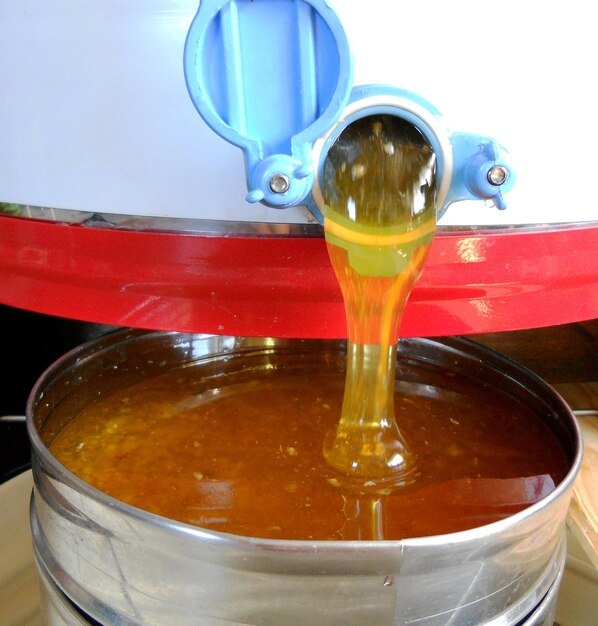Introduction to Adhesives: Unveiling the Composition, Variety, and Applications

INTRODUCTION
WELCOME TO RUNZOER INDIA, where we delve into the fascinating world of these versatile and indispensable bonding agents. In this comprehensive guide, we unravel the mysteries behind adhesives, exploring their composition, diverse range of types, and wide-ranging applications. Whether you’re a DIY enthusiast, a professional in the manufacturing industry, or simply intrigued by the science of bonding, this blog is designed to satisfy your curiosity and provide you with a wealth of information. Join us as we peel back the layers and reveal the secrets of adhesives, shedding light on their incredible potential in various fields. From industrial applications to everyday use, we’ll explore how adhesives have become an essential part of our lives. So, fasten your seatbelts and let’s dive into the fascinating world of adhesives together.
Adhesives: Their Significance in Our Daily Lives
Adhesives play a crucial role in bonding materials together, serving as a substance that creates a connection between different objects, resisting their separation. Known as glue, cement, mucilage, or paste, adhesives assume various forms, including solid, liquid, or semi-liquid, and possess the capability to affix items temporarily or permanently to surfaces based on their adhering properties.
The significance of adhesives in our everyday lives becomes evident when addressing incidents like repairing broken eyeglasses, addressing last-minute footwear malfunctions, mitigating water leakage from damaged pipes, engaging in creative endeavors such as arts, crafts, construction, decorations, and spanning various industries like packaging and automotive. From being a simple stationery item to fulfilling multifaceted purposes in different sectors, the versatility of adhesives is unmistakable.
Historical Evolution and Composition of Adhesives
The earliest form of adhesive was discovered in natural, unprocessed gum sourced from trees, with Neanderthals pioneering its utilization through the distillation of birch bark trees around 200,000 years ago, producing tar with sticky and water-resistant properties. As civilizations across the globe embraced the use of adhesives, evidence of their applications was found in artifacts like wooden gluing operations and the use of starch-based pastes by the ancient Egyptians.
Subsequent civilizations such as the Greeks and Romans contributed to the advancement of adhesives, experimenting with various natural components—including animal-based adhesives, egg-based pastes, and organic materials like blood, bone, and hide. The industrialization of adhesive production commenced in the late 17th century when glues were manufactured from animal hides in the Netherlands, paving the way for subsequent advancements such as the use of casein glues in German and Swiss factories.
The evolution of adhesives continued with the introduction of natural rubber as an adhesive material in 1830, followed by significant innovations during the First and Second World Wars that shaped the composition of adhesives, leading to the emergence of synthetic adhesives designed to meet evolving technological demands.
Adhesive composition comprises a wide array of ingredients, not limited to chemical mixtures of polymers or resins, including substances such as animal products, copper, graphite, milk, oil, starch, rubber, nickel, water, silver, and vegetables.
Types of Adhesives
Adhesives are categorized into diverse types based on various factors including their chemistries, forms, types, origins, or load-carrying capabilities. These variations in adhesives cater to a wide array of applications. Here is an insight into some of the main types:
By Capability
Structural –
These robust adhesives can withstand significant stresses and are utilized in various structural applications, showcasing strong load-carrying capacities, long-term durability, and resistance to heat, solvents, and fatigue.
Semi-Structural –
Strong yet unable to maintain continuous load-bearing support, semi-structural adhesives are well-suited for short-term or temporary attachments.
Non-Structural –
Offering relatively low strength with a load-carrying capacity of under 1000 psi, non-structural adhesives are commonly used for light-duty packaging, gaskets, veneers, and trim, notably for attaching dissimilar substrates such as paper, cardboard, foam, metal, and plastic.
By Type
Pressure-sensitive –
Pressure-sensitive adhesives (PSAs) form a bond merely through the application of pressure, without the need for solvent, water, or heat activation. These versatile adhesives are commonly used in industrial and commercial settings, with applications ranging from food labels and packaging to bandages and electronics. They adhere well to paper, glass, wood, plastic, or metal through light pressure.
PSAs can be permanent or removable, finding applications in safety labels, sound/vibration damping film, foil tape for HVAC ductwork, as well as protection films, price marking labels, and promotional graphics materials, among others.
Contact Adhesives –
Unlike other adhesives, contact adhesives must be applied to both surfaces and allowed to dry before bonding the surfaces. While contact adhesives might require up to 24 hours to dry, once set, they form a quick bond. They are commonly used in laminates, the bonding of Formica and wooden counters, footwear manufacturing, automotive assembly, furniture production, leather goods, decorative laminates, and plastics.
By Form
Paste & Liquid –
Paste adhesives, with their high viscosity, are notably thick and best suited for gap-filling applications. Conversely, liquid adhesives, widely found and easy to apply, may experience leakage or sagging during the curing process and often require longer curing times.
Film & Pellets –
Adhesive films, available in rolls or pre-cut shapes and with thicknesses between 2 and 8 mm, offer easy application and strong bonding with materials such as fabric, leather, rubber, and aluminum. Hot-melt glue pellets, melted onto surfaces requiring rapid bonding, are waterproof, exhibit high temperature tolerance, offer greater movement capacities, and prevent corrosion on metals.
By Origin
Synthetic –
Synthetic adhesives, made by combining various chemicals, offer superior versatility and performance compared to natural adhesives. They can be tailored and combined to achieve specific properties necessary for ease of application and durability in their intended use. Synthetic adhesives are based on elastomers, thermoplastics, and thermosets, offering a broad range of properties to meet diverse application needs.Natural Adhesives
Derived from animal (such as the milk protein casein and hide-based animal glues) or plant sources (vegetable starch (dextrin), natural resins), natural adhesives, also known as bioadhesives or eco adhesives, are based on renewable materials. These non-toxic adhesives require no special disposal procedures. For instance, the simple paste made by mixing cooking flour with water functions as a natural adhesive when creating items like pies or spring rolls.
While natural adhesives are often considered to have lower adhesion compared to synthetic adhesives, they find their place in wood and paper products, notably in corrugated boards, envelopes, bottle labels, cartons, book bindings, foils, furniture, and laminated film, among others.
That being said, polyurethane adhesives based on castor oil are emerging as a significant alternative to synthetic adhesives.
Polyurethane Adhesives
Also known as PU, polyurethane adhesives are widely employed due to their exceptional adhesion strength, insulation properties, and flexibility. They are especially valued for the elasticity of seams and bonds they produce and are essential components in the construction, woodworking, shoe production, and textile lamination industries.
A research team from the Polymer Technology and Analytical Chemistry (LQATP) at the São Carlos Institute of Chemistry recently modified polyurethane adhesive with a renewable source, resulting in a low-cost and biodegradable solution: castor oil-based polyurethane adhesive.
Using vegetable oils to produce valuable polymers such as polyurethane, alkyd, polyester, amide, and epoxy resins is gaining traction due to economic and environmental considerations. Castor oil, in particular, has demonstrated promise as a starting raw material for polyurethane as it is readily available as a renewable agricultural resource and exhibits low toxicity.
The main component in castor oil, ricinoleic acid, can be modified to introduce hydroxyl functional groups, thereby converting castor oil into a polyol. This makes castor oil ideal for use as a polyol in chemical industries.
Recent research has shown that adhesives prepared from aromatic isocyanate in castor oil possess strong adhesion strength and chemical resistance, surpassing the performance of solvents and formaldehyde commonly used in various adhesives. Additionally, a study demonstrated that solventless castor oil polyurethane adhesive exhibited 75% higher peeling strength values than a solvent-based commercial adhesive, making castor oil-based PU resin a fitting bioadhesive.
The advantages of polyurethane derived from castor oil include ease of handling at ambient temperature, robust resistance to water and ultraviolet rays, high mechanical strength, and its renewable source.
By Chemistry
Epoxy Adhesive
Epoxy adhesives, consisting of epoxy resin and curing agents, serve as versatile reactive adhesives widely utilized in industries such as general manufacturing, construction, electronics assembly, automobile production, and aerospace. Available in one- or two-component packages, epoxy adhesives exhibit exceptional stability, demonstrating strong adhesion to an array of substrates such as metals, glass, concrete, ceramics, wood, and numerous plastics, and are designed to withstand continual weight or force over prolonged periods.
The tone of voice and the output language are as per the requirements specified.Polyamides –
Polyamide adhesives are utilized in various forms: alone, as liquid resins with a range of viscosities, in solid form such as powders, sticks, films, and fabrics, or as solutions or emulsions in organic solvents or water. They exhibit strong adhesion to metals, plastics, ceramics, wood, leather, and fabrics and are extensively used in the manufacture of machinery and instruments. Hot-melt polyamide adhesives are particularly well-suited for the production of packaging materials and in printing. Their adhesive bonds withstand mechanical loads, including peeling, as well as the effects of fuels, oils, and mold.
CONCLUSION
Adhesives are an indispensable part of our daily lives, offering a multitude of applications and serving as a vital bonding agent. From repairing broken items to engaging in creative endeavors, adhesives play a significant role in various industries and sectors. The historical evolution of adhesives showcases the constant innovation and advancements that have shaped their composition over time. With a wide range of types available, such as epoxy adhesives and polyamides, they cater to diverse needs and exhibit exceptional adhesive properties. As we continue to explore the amazing potential of adhesives, it is clear that their incredible versatility and significance make them an indispensable part of our lives. Whether in everyday use or industrial settings, adhesives continue to provide reliable and efficient solutions, firmly bonding materials together and contributing to our daily routines. For more information on the types of adhesives and their applications, feel free to refer to our comprehensive guide.
At RUNZOER INDIA , we prioritize natural resources, and our adhesive made from refined castor oil is a compelling option for your next project. To learn more about us, visit our website today.
